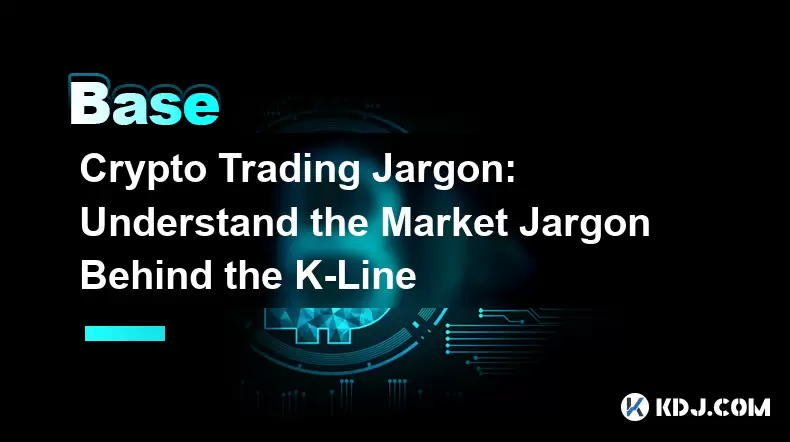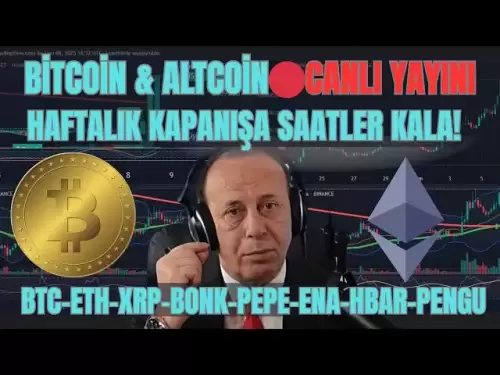-
 Bitcoin
Bitcoin $118700
0.41% -
 Ethereum
Ethereum $3884
1.72% -
 XRP
XRP $3.235
1.28% -
 Tether USDt
Tether USDt $1.000
-0.03% -
 BNB
BNB $847.0
6.22% -
 Solana
Solana $191.9
2.15% -
 USDC
USDC $0.9999
-0.01% -
 Dogecoin
Dogecoin $0.2408
1.20% -
 TRON
TRON $0.3227
0.38% -
 Cardano
Cardano $0.8281
0.24% -
 Hyperliquid
Hyperliquid $44.45
3.17% -
 Sui
Sui $4.216
0.36% -
 Stellar
Stellar $0.4391
-0.06% -
 Chainlink
Chainlink $19.11
1.30% -
 Hedera
Hedera $0.2840
-1.03% -
 Bitcoin Cash
Bitcoin Cash $584.5
-1.52% -
 Avalanche
Avalanche $26.99
7.75% -
 Litecoin
Litecoin $113.9
0.24% -
 Toncoin
Toncoin $3.392
3.06% -
 Shiba Inu
Shiba Inu $0.00001412
0.30% -
 UNUS SED LEO
UNUS SED LEO $8.967
-0.15% -
 Ethena USDe
Ethena USDe $1.001
-0.06% -
 Uniswap
Uniswap $10.95
3.03% -
 Polkadot
Polkadot $4.238
1.63% -
 Monero
Monero $330.9
1.77% -
 Bitget Token
Bitget Token $4.708
2.28% -
 Pepe
Pepe $0.00001288
2.13% -
 Dai
Dai $0.9999
0.00% -
 Cronos
Cronos $0.1447
3.13% -
 Aave
Aave $305.2
2.78%
Crypto Trading Jargon: Understand the Market Jargon Behind the K-Line
K-lines, or candlestick charts, are crucial for crypto trading, showing price movements with bodies and wicks; patterns like Doji and Hammer signal potential market shifts.
May 11, 2025 at 06:21 pm

In the world of cryptocurrency trading, understanding the language and terminology used can be crucial for making informed decisions. One of the most fundamental aspects of technical analysis in trading is the K-line, also known as the candlestick chart. This article delves into the market jargon associated with K-lines, helping traders decode the patterns and terminology that are essential for navigating the volatile crypto markets.
What is a K-Line?
The K-line is a type of chart used in trading to display the price movements of a cryptocurrency over a specific period. Each K-line represents the trading activity that occurred during a chosen time frame, which can range from minutes to months. The K-line gets its name from the Japanese word "candle," as the shape of the chart resembles a candle with a body and wicks.
Components of a K-Line
A single K-line is composed of several key elements that provide traders with valuable information about market sentiment and potential price movements. These components include:
Body: The rectangular part of the K-line represents the range between the opening and closing prices. If the closing price is higher than the opening price, the body is typically colored green or white, indicating a bullish period. Conversely, if the closing price is lower than the opening price, the body is usually colored red or black, signaling a bearish period.
Wicks or Shadows: The lines extending from the top and bottom of the body are called wicks or shadows. The upper wick shows the highest price reached during the time frame, while the lower wick indicates the lowest price. These wicks are crucial as they provide insight into the volatility and potential reversal points within the market.
Open and Close Prices: The open price is the first traded price at the start of the time frame, and the close price is the last traded price at the end of the time frame. These prices form the boundaries of the body and help traders understand the market's direction.
Common K-Line Patterns
Traders often look for specific patterns within K-line charts to predict future price movements. Some of the most common patterns include:
Doji: A Doji K-line occurs when the open and close prices are very close to each other, resulting in a small or non-existent body. This pattern suggests indecision in the market and can signal potential reversals.
Hammer and Hanging Man: Both of these patterns have small bodies and long lower wicks. A Hammer appears during a downtrend and suggests a potential bullish reversal, while a Hanging Man appears during an uptrend and indicates a possible bearish reversal.
Engulfing Patterns: An engulfing pattern consists of two K-lines, where the body of the second K-line completely engulfs the body of the first. A bullish engulfing pattern occurs when a small bearish K-line is followed by a larger bullish K-line, suggesting a shift towards a bullish trend. Conversely, a bearish engulfing pattern indicates a potential shift towards a bearish trend.
Reading K-Line Charts
To effectively read K-line charts, traders need to understand how to interpret the various patterns and components. Here are some steps to guide you through the process:
Identify the Time Frame: Choose the appropriate time frame for your trading strategy, whether it's short-term (e.g., 1-minute, 5-minute) or long-term (e.g., daily, weekly).
Analyze the Body and Wicks: Look at the color and size of the body to determine the market's direction. Pay attention to the length of the wicks to gauge volatility and potential reversal points.
Spot Patterns: Scan the chart for common K-line patterns such as Doji, Hammer, Hanging Man, and Engulfing Patterns. These can provide insights into potential market movements.
Combine with Other Indicators: While K-line charts are powerful on their own, combining them with other technical indicators such as moving averages, RSI, and MACD can enhance your analysis and increase the accuracy of your predictions.
Advanced K-Line Concepts
For more experienced traders, understanding advanced concepts related to K-lines can further refine their trading strategies. Some of these concepts include:
Candlestick Confirmation: Many traders wait for confirmation of a pattern before acting on it. For example, a bullish engulfing pattern might be confirmed by a subsequent bullish K-line, increasing the likelihood of a trend reversal.
Volume Analysis: Combining K-line patterns with volume data can provide additional confirmation. For instance, a bullish engulfing pattern accompanied by high trading volume is a stronger signal of a potential bullish trend.
Multiple Time Frame Analysis: Analyzing K-line charts across different time frames can help traders identify trends and patterns that might not be visible on a single time frame. For example, a pattern on a daily chart might be confirmed by a similar pattern on a weekly chart.
Practical Application of K-Line Jargon
To apply the knowledge of K-line jargon in real-world trading scenarios, consider the following steps:
Select a Cryptocurrency: Choose a cryptocurrency you are interested in trading, such as Bitcoin or Ethereum.
Access a Trading Platform: Use a reputable trading platform that offers K-line charts, such as Binance, Coinbase Pro, or TradingView.
Set Up Your Chart: Configure your chart to display K-lines for your chosen time frame. Most platforms allow you to switch between different time frames easily.
Analyze the Chart: Look for patterns and trends in the K-line chart. For example, if you spot a bullish engulfing pattern on a daily chart, it might indicate a good time to enter a long position.
Execute Trades: Based on your analysis, execute trades that align with your trading strategy. Always use risk management techniques such as stop-loss orders to protect your investments.
Monitor and Adjust: Continuously monitor the market and adjust your positions as needed. K-line patterns can change quickly, so staying vigilant is key to successful trading.
Frequently Asked Questions
Q: Can K-line patterns be used for all cryptocurrencies?
A: Yes, K-line patterns can be applied to any cryptocurrency that has sufficient trading volume and liquidity. However, the effectiveness of these patterns may vary depending on the specific market dynamics of each cryptocurrency.
Q: How reliable are K-line patterns in predicting price movements?
A: While K-line patterns can provide valuable insights into market sentiment and potential price movements, they are not foolproof. Traders should use K-line patterns in conjunction with other technical indicators and fundamental analysis to increase the reliability of their predictions.
Q: Is it necessary to use multiple time frames when analyzing K-line charts?
A: Using multiple time frames can enhance your analysis by providing a more comprehensive view of market trends. However, it is not strictly necessary, and some traders may prefer to focus on a single time frame that aligns with their trading strategy.
Q: How can beginners start using K-line charts effectively?
A: Beginners should start by familiarizing themselves with the basic components and common patterns of K-line charts. Practicing on a demo trading account can help build confidence and understanding before trading with real money. Additionally, combining K-line analysis with other technical indicators can provide a more robust trading strategy.
Disclaimer:info@kdj.com
The information provided is not trading advice. kdj.com does not assume any responsibility for any investments made based on the information provided in this article. Cryptocurrencies are highly volatile and it is highly recommended that you invest with caution after thorough research!
If you believe that the content used on this website infringes your copyright, please contact us immediately (info@kdj.com) and we will delete it promptly.
- US President, EU Trade, Crypto Spike: What's the Deal?
- 2025-07-28 18:30:12
- Adrian Newman's Endorsement: Ethereum Still King for NFT Collections?
- 2025-07-28 18:30:12
- Crypto's Next Big Meme: Is MAGACOIN Finance the New DOGE or SHIB?
- 2025-07-28 17:15:12
- Altcoins, Cryptos, and 250x Potential: Catching the Next Wave
- 2025-07-28 17:15:12
- BlackRock Veteran Joins SharpLink as Ethereum Treasury Swells: A New Era?
- 2025-07-28 17:50:12
- Bitcoin Laundering, Blockchain Forensics, and Crypto Fraud: A Deep Dive into the Dark Side of Digital Assets
- 2025-07-28 17:50:12
Related knowledge

What is the difference between CeFi and DeFi?
Jul 22,2025 at 12:28am
Understanding CeFi and DeFiIn the world of cryptocurrency, CeFi (Centralized Finance) and DeFi (Decentralized Finance) represent two distinct financia...

How to qualify for potential crypto airdrops?
Jul 23,2025 at 06:49am
Understanding What Crypto Airdrops AreCrypto airdrops refer to the distribution of free tokens or coins to a large number of wallet addresses, often u...

What is a crypto "airdrop farmer"?
Jul 24,2025 at 10:22pm
Understanding the Role of a Crypto 'Airdrop Farmer'A crypto 'airdrop farmer' refers to an individual who actively participates in cryptocurrency airdr...

What is the difference between a sidechain and a Layer 2?
Jul 20,2025 at 11:35pm
Understanding the Concept of SidechainsA sidechain is a separate blockchain that runs parallel to the main blockchain, typically the mainnet of a cryp...

What is the Inter-Blockchain Communication Protocol (IBC)?
Jul 19,2025 at 10:43am
Understanding the Inter-Blockchain Communication Protocol (IBC)The Inter-Blockchain Communication Protocol (IBC) is a cross-chain communication protoc...

How does sharding improve scalability?
Jul 20,2025 at 01:21am
Understanding Sharding in BlockchainSharding is a database partitioning technique that is increasingly being adopted in blockchain technology to enhan...

What is the difference between CeFi and DeFi?
Jul 22,2025 at 12:28am
Understanding CeFi and DeFiIn the world of cryptocurrency, CeFi (Centralized Finance) and DeFi (Decentralized Finance) represent two distinct financia...

How to qualify for potential crypto airdrops?
Jul 23,2025 at 06:49am
Understanding What Crypto Airdrops AreCrypto airdrops refer to the distribution of free tokens or coins to a large number of wallet addresses, often u...

What is a crypto "airdrop farmer"?
Jul 24,2025 at 10:22pm
Understanding the Role of a Crypto 'Airdrop Farmer'A crypto 'airdrop farmer' refers to an individual who actively participates in cryptocurrency airdr...

What is the difference between a sidechain and a Layer 2?
Jul 20,2025 at 11:35pm
Understanding the Concept of SidechainsA sidechain is a separate blockchain that runs parallel to the main blockchain, typically the mainnet of a cryp...

What is the Inter-Blockchain Communication Protocol (IBC)?
Jul 19,2025 at 10:43am
Understanding the Inter-Blockchain Communication Protocol (IBC)The Inter-Blockchain Communication Protocol (IBC) is a cross-chain communication protoc...

How does sharding improve scalability?
Jul 20,2025 at 01:21am
Understanding Sharding in BlockchainSharding is a database partitioning technique that is increasingly being adopted in blockchain technology to enhan...
See all articles

























































































